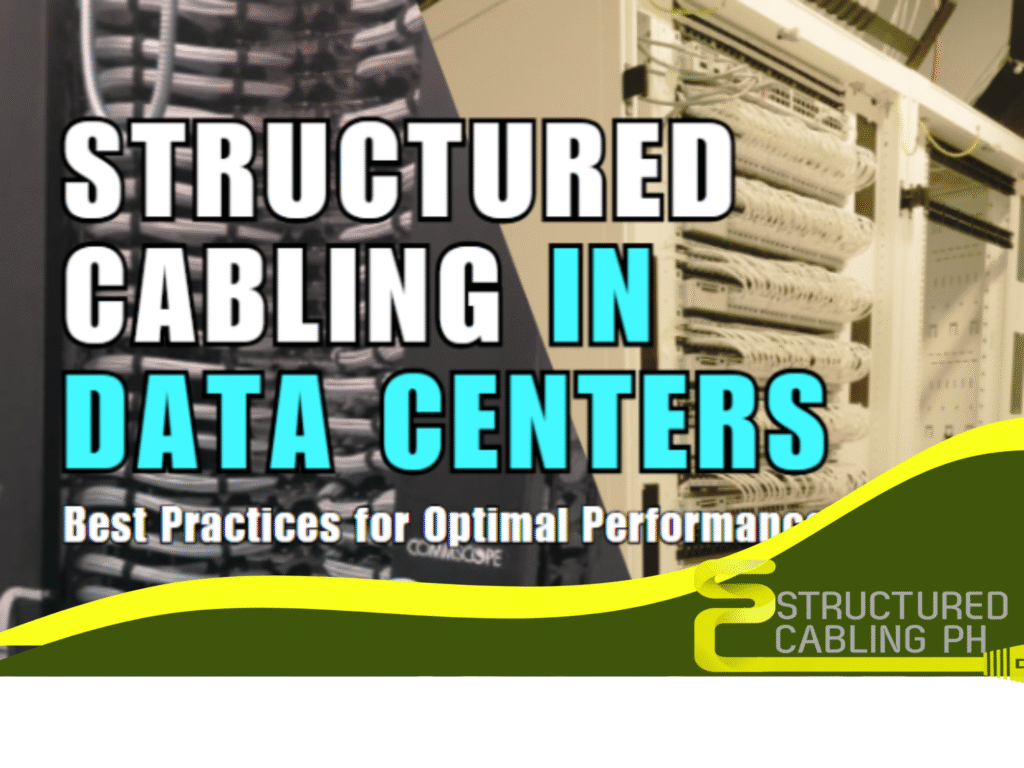Laying the Groundwork for Speed, Stability, and Scalability
In data centers, where uptime is critical and data flows nonstop,
structured cabling is more than just a physical connection. It’s the framework that supports every server, switch, and system. Without a well-organized cabling infrastructure, even the most advanced hardware can fall short in
performance and reliability.
In this post, we explore the
best practices for structured cabling in data centers to ensure optimal performance, future scalability, and minimal downtime.
What Is Structured Cabling in a Data Center?
Structured cabling in data centers refers to the
standardized system of cables, connectors, and devices that support the transmission of data, voice, and video across the facility. Unlike point-to-point cabling, structured cabling uses a
modular and organized approach to keep connections consistent, manageable, and efficient.
Key components include:
- Horizontal and vertical cabling
- Patch panels and distribution racks
- Cable management systems
- Fiber optic and copper cabling
- Cross-connects and main distribution areas (MDA)
Why Structured Cabling Matters in Data Centers
Data centers operate 24/7, often hosting
mission-critical applications. Here’s how structured cabling contributes to that reliability:
- Reduces latency and signal loss
- Simplifies troubleshooting and maintenance
- Supports high-speed transmission (10Gbps, 40Gbps, 100Gbps, and beyond)
- Enables fast scalability and equipment changes
- Improves airflow and cooling efficiency
Best Practices for Structured Cabling in Data Centers
1. Plan for Scalability from the Start
- Design your cabling layout with future growth in mind
- Use higher-grade cabling (Cat6a, Cat7, or fiber) to support increased bandwidth
- Leave extra space in racks and trays for additional cables and devices
2. Stick to Industry Standards
- Follow standards like TIA-942 for data center cabling
- Use color coding and labeling based on TIA/EIA standards for easier identification
- Ensure all components are compatible and properly rated
3. Optimize Cable Management
- Use horizontal and vertical cable managers to maintain a clean layout
- Bundle and route cables neatly to prevent tangling and obstruction
- Avoid over-bending or over-tightening cables, which can degrade performance
4. Use Patch Panels Strategically
- Implement patch panels to organize connections between devices and switches
- Reduces direct point-to-point connections that become unmanageable over time
- Makes changes or upgrades more efficient and less disruptive
5. Separate Copper and Fiber Runs
- Use separate pathways or conduits for copper and fiber optic cables
- Prevents signal interference and meets fire safety regulations
- Keeps the infrastructure clean and compliant
6. Monitor Temperature and Airflow
- Poor cabling can block vents and compromise cooling systems
- Ensure cables are routed to allow proper airflow between server racks
- Use raised floors or overhead trays for better thermal management
7. Label Everything
- Label both ends of every cable with unique identifiers
- Maintain accurate documentation of your cable layout
- Simplifies future troubleshooting and reduces downtime
Avoiding Common Mistakes
Even in
high-tech environments, these cabling mistakes are still too common:
- Using low-quality or mismatched components
- Allowing cables to hang loosely or get tangled
- Skipping routine maintenance and inspection
- Failing to document changes over time
Pro tip: Regular audits of your cabling infrastructure can catch problems early and keep performance consistent.
Final Thoughts
Structured cabling might seem like a behind-the-scenes detail, but in the high-stakes environment of a data center, it’s a
foundational asset. A well-executed cabling strategy not only boosts performance—it protects uptime, simplifies expansion, and enhances long-term operational efficiency.
Need Expert Help with Your Data Center Cabling?
At
VastResult, we specialize in designing and implementing structured cabling systems tailored to the unique demands of modern data centers. From assessment to installation, our team ensures your infrastructure is reliable, scalable, and ready for the future.
Contact VastResult today at
(02) 8404 0740 or email us at
support@vastresult.com for a consultation or on-site evaluation.


